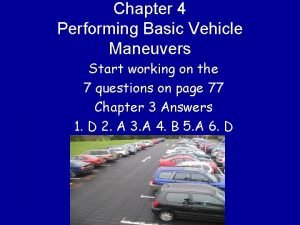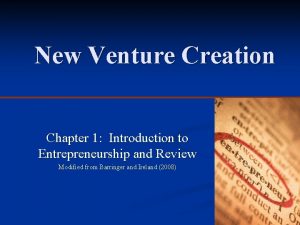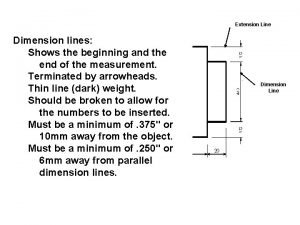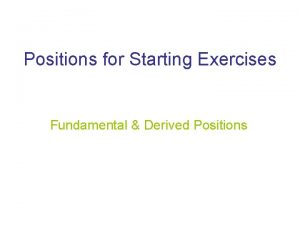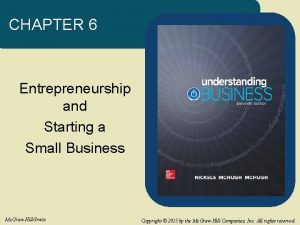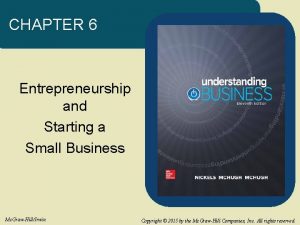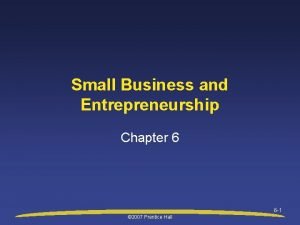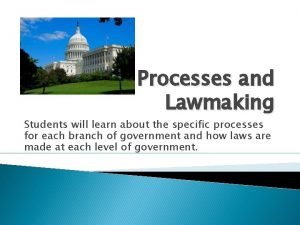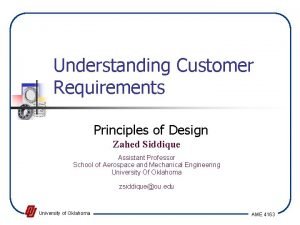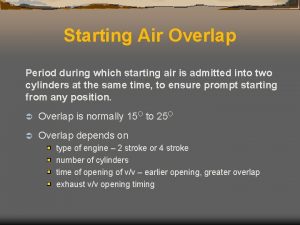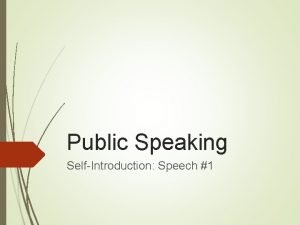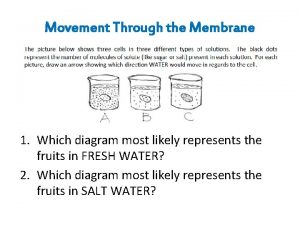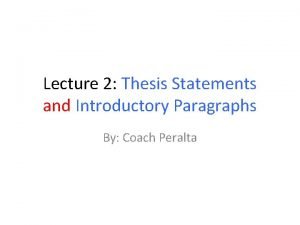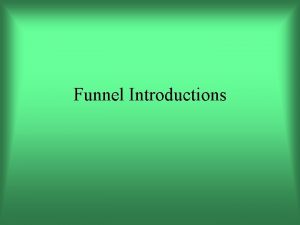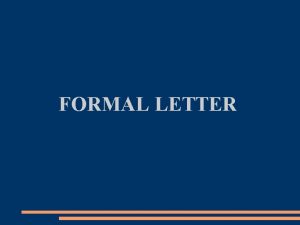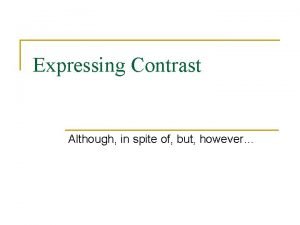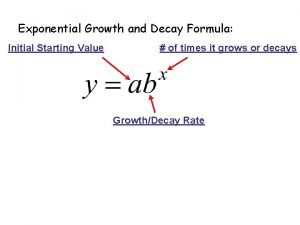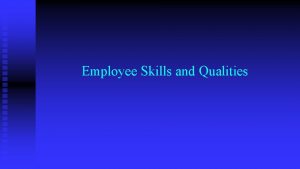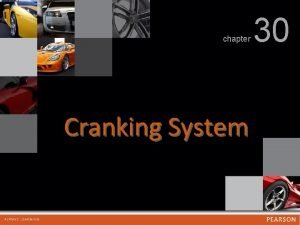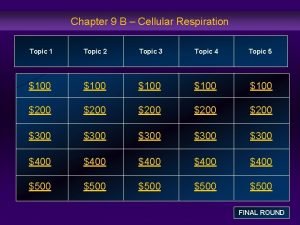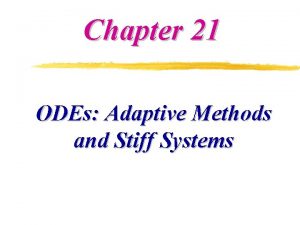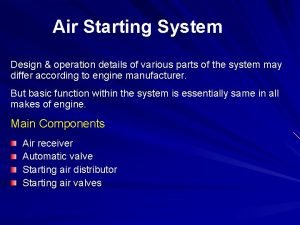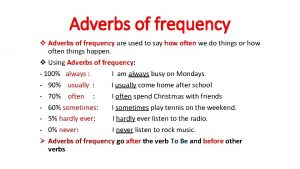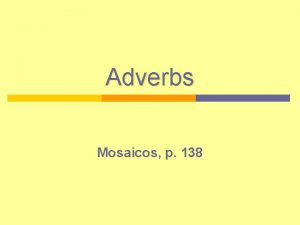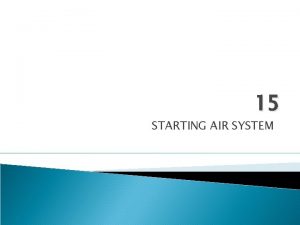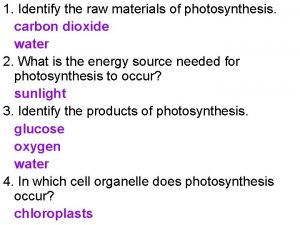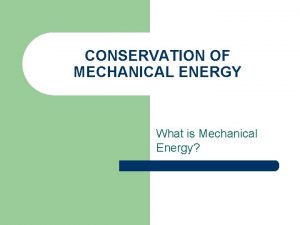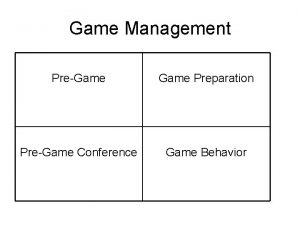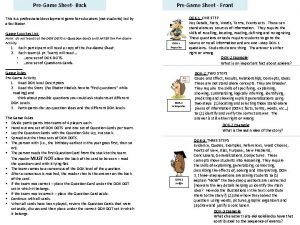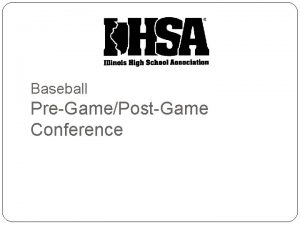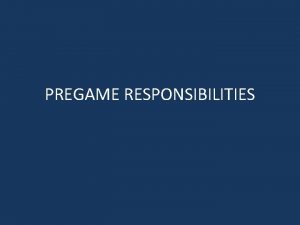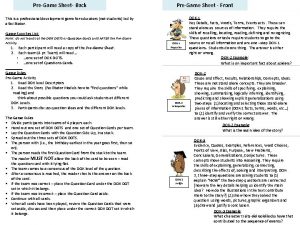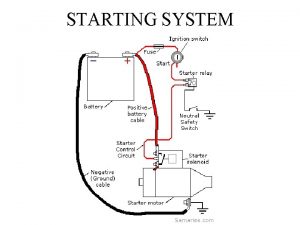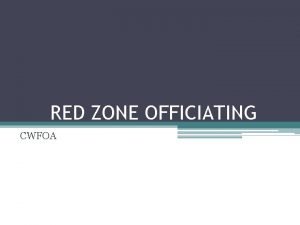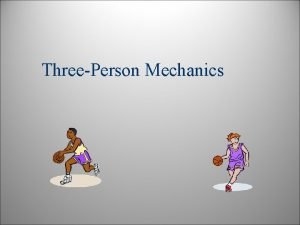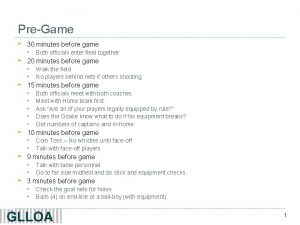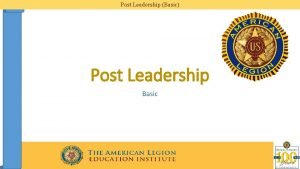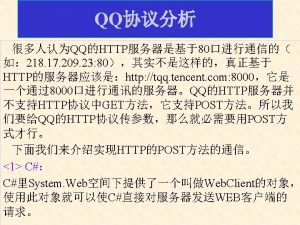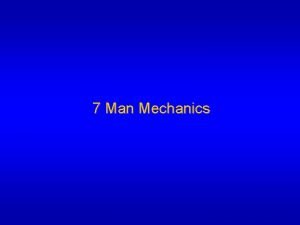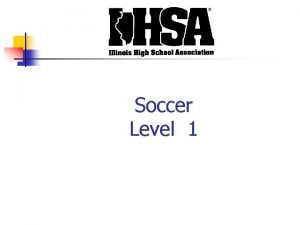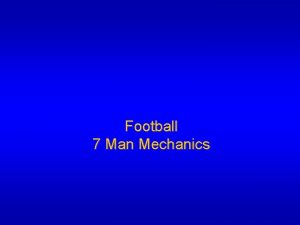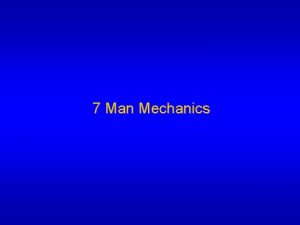PreGame and Post Game Summary Starting a game










































- Slides: 42

Pre-Game and Post Game

Summary • Starting a game • Pre-Game – Checking in with Home Management – With your partner – Equipment Checks – Coaches Meeting • Ending a game • Post Game

Starting a game 4 -1

Rule 4 -1 Art 1, 2 1. The home coach shall decide whether the grounds and other conditions are suitable for starting the game 2. Pregame Conference. The pregame conference should take place approximately five minutes prior to the game and before the home team takes the field. During the pregame conference:

Rule 4 -1 Art 2(con’t) a. There shall be no balls hit or thrown in live-ball territory. b. The home team and then the visiting team shall deliver their respective lineup cards, in duplicate, to the plate umpire. The umpire shall then permit inspection by both captains/coaches. The substitution regulations as in Rule 3 are then in effect. c. Ground rules, as in 4 -1 -3, shall be announced. d. Umpires shall ask head coaches to verify that their players are legally and properly equipped and shall remind participants about proper sporting behavior.

Rule 4 -1 Art 3 3. Ground Rules. If there are unusual conditions, such as spectators or obstacles too near the playing field, the home coach shall propose special ground rules. If sanctioned by the visiting team, these shall be in force. If the teams cannot agree, the umpires shall formulate ground rules. Ground rules shall not supersede a rules book rule.

Rule 4 -1 Art 3 a, b a. The field should be clearly marked. Markings should include flags on foul poles along the foul lines past first base and third base and vertical foul-line markings on any wall that limits the outfield. b. When a fair or foul fly lands near a stand or fence, Rule 7 -4 -11 applies. If there is a screen behind the catcher or any permanent obstruction in front of the stands, a batted ball that goes behind these becomes dead. It is recommended that no such obstruction be less than 25 feet from the diamond.

Rule 4 -1 Art 3 c, d c. Wild pitches, overthrows and batted balls that go over or through a fence or into a dugout are governed by Rule 8 -4 -3; if the field has unusual obstructions, ground rules should attempt to be similar to this rule. d. For special field conditions, such as a drain pipe that makes a spot where it is impossible or very difficult for a fielder to retrieve the ball, the ball should become dead if it goes to that spot, and each runner’s advance should be limited to two bases.

Rule 4 -1 Art 3 e e. For an unfenced field, a chalk or imaginary out-of-bounds line should be established to define live-ball area. If cars are parked along the out-of-play lines, umpires should consider these the same as bleachers and the ball becomes dead if it bounces into the line of cars. The umpires should anticipate such a situation and announce the ground rule in advance.

Rule 4 -1 Art 4 -6 4. The visiting team shall be the first to take its turn at bat. On a neutral field or by agreement, either team may be designated as Home Team. 5. The game begins when the umpire calls “Play Ball. ” 6. After the game starts (when the umpire calls “Play Ball”), the umpires are sole judges as to whether conditions, including grounds, are fit for play, and as to whether conditions are suitable for starting the second game of a scheduled doubleheader (two games between the same teams during the same day).

Pre-Game When you arrive at the site

Arrival at the Site • Arrive 45 minutes before start time • Host administration should give a game ball to each team for warm up • Notify host administration when you arrive • Become familiar with the field – Discuss ground rules with home coach – All ground rules are finalized by umpires prior to pregame conference

Pre-Game With your partner

Partner Discussion • Review new rules • Discuss fair/foul and dead ball coverage • Review illegal pitch calls and who has primary responsibilities • Review proper tag up, missed bases, and appeal responsibilities • Review check swing mechanics • Review keeping count and warm up pitches

Partner Discussion • Review communications – If you deviate, COMMUNICATE • Review equipment checks • Review pregame conference with coaches • Review the ground rules • Determine if there is a national anthem or announcements • Arrive at the field in time for equipment checks and pregame conference

Pre-Game Equipment

Helmets Checks • Must have NOCSAE stamp on helmet(1 -6 -1) • Must have legible exterior warning label (1 -6 -1) – May be on outside or either side of the bill • Must have ear flaps that cover both ears and temples(1 -6 -4) • Look for breaks, cracks, dents or having been altered (1 -6 -5) • “Meets NOCSAE Standard” must be permanently affixed to the face protector(1 -6 -6) • Any eye shields attached to the helmet must allow 100% light transmission

Catchers Equipment Checks • Must have NOCSAE stamp on helmet(1 -7 -1) – Throat protector, can be a part of or attached to the mask – Any face shields must allow 100% light transmission • Chest protector and shin guards (1 -7 -2) • Any non-adult warming up a pitcher at any location within the confines of the field shall wear a helmet that complies with 1 -7 -1 (1 -7 -3)

Bat Checks • Must be one piece, multi-pieces and permanently assembled or two pieces with interchangeable barrel construction(1 -5 -1 a) • No exposed rivets, pins, rough or sharp edges or any hazardous fasteners (1 -5 -1 b) • Must be free of rattles, dents, burrs, cracks and sharp edges, must not be altered or warmed (15 -1 c) • Must have ASA 2000 or 2004 certification mark(1 -5 -1 d) – If entirely made of wood doesn’t have to have ASA mark, but can’t exceed 2 ¼ “ diameter

Bat Checks (1 -5 -2) a. Knob. The knob may be molded, lathed, welded or permanently fastened. Devices, attachments or wrappings are permitted except those that cause the knob to become flush with the handle. A one-piece rubber knob and bat grip combination is illegal. b. Handle/Grip. The bat handle is the area of the bat that begins at, but does not include the knob and ends where the taper begins to increase in diameter. The handle shall have a round or oval cross-section. The grip shall extend a minimum of 10 inches, but not more than 15 inches, from the small end of the bat. A safety grip shall be made of cork, tape (no smooth, plastic tape) or composition material (commercially manufactured). Resin, pine tar or spray substances to enhance the hold are permitted on the grip only.

Bat Checks (1 -5 -2) c. Taper. The taper is the transition area which connects the narrower handle to the wider barrel portion of the bat. The taper shall have a smooth, solid surface and shall have a conical shape. Its length and material may vary. d. Barrel. The barrel is the area intended for contact with the pitch; it shall be round and smooth. e. End Cap. The end cap is made of rubber, vinyl, plastic or other approved material. It shall be firmly secured and permanently affixed to the end of the bat so that it cannot be removed by anyone other than the manufacturer, without damaging or destroying it. A onepiece construction bat will not have an end cap

Warm up bats (1 -5 -3) • Warm-up bats used in the on-deck circle shall have all parts permanently and securely attached at the time of manufacture and at the time of use. No more than two bats shall be used when warming up in the on-deck circle. Devices added to a bat for warm-up purposes shall be commercially manufactured specifically for a softball bat and shall be securely attached, so as not to disengage during use. Such devices shall take, but not exceed, the general shape and size of a bat including the grip.

Pre-Game Plate Conference

Plate Conference • Plate Umpire Leads the meeting – Behind home plate facing the field – Base Umpire will face plate umpire – Head Coaches (Asst. Coaches and/or captains) are on their respective sides of home plate

Plate Conference 1. Introduce yourself and your partner(s), have others introduce themselves 2. Verify with the coaches that all players are legally and properly equipped and all equipment is in compliance with NFHS rules 3. Review ground rules – Start with 3 rd base dugout and go all the way around the diamond covering all items

Plate Conference 4. Ask if there any questions about any rules. 5. Remind teams if there are questions during the game only one person approaches the umpire responsible for the call in a sporting manner. 6. Check the lineups from each team. Look for first initial, last name, defensive position and number hand it back to each coach for inspection.

Plate Conference 7. Review with all in attendance the expectations of good sporting behavior and wish them the best of luck.

Ending a Game

Ending a Game (4 -2) 1. A game ends when the team behind in score has completed its turn at bat in the seventh inning or in any extra inning. If the home team scores a go-ahead run in the bottom of the seventh inning or in any extra inning, the game is terminated at that point. 2. If a game ends because of weather conditions, or darkness interferes with play so that the game is called (ended) by the umpire, it is a regulation game provided:

Ending a Game (4 -2 -2) a. five full innings have been played; or if the home team has scored an equal or greater number of runs in four or four and a fraction turns at bat than the visiting team has scored in five turns. b. play has gone beyond five full innings and is called when the teams have not had an equal number of completed turns at bat. The score shall be the same as it was at the end of the last completed inning; unless the home team, in its half of the incomplete inning, scores a run (or runs) which equals or exceeds the opponent’s score, in which case, the final score shall be as recorded when the game is called.

Ending a Game (4 -2 -3) 3. A state association may adopt game-ending procedures that determine how games are ended, including suspended games. However, if a state association does not have established game-ending procedures, by mutual agreement of the opposing coaches and the plate umpire, any remaining play may be shortened at any time or the game terminated. – IHSAA has 10 run ahead rule after 5 innings

Ending a Game (4 -2 -4 -6) 4. If a game is called before completion of the number of innings and conditions as specified in 4 -2 -2, the umpire shall declare the contest “no game” unless play is terminated by 4 -2 -3. 5. If a regulation called game has a tie score when ended as in 4 -2 -2, it is a tie game unless the state association has any prescribed game-ending procedures. Batting and fielding records are counted, but the game is not counted in computing percentages of games won and lost. 6. By state association adoption, a tie-breaker procedure may be instituted at a point in the game specified by the state association – Only used in regular season tournament play

Ending the game • Make sure not to exit until you are sure there isn’t going to be a protest • Be sure to exit the field as a team • Exit through the dugout with the least amount of conflict – Path of least resistance

Leaving the field • Don’t discuss the game with players, coaches of fans – Usually not a good outcome – Always be professional – Bite your tongue when you have to • If confronted by press refer them to home management

Post Game

Post Game • Take time to have a post game • Get out away from everyone where you can discuss the game • Mention positive things about the game – Everyone needs a little reassurance they are doing the right things • Discuss any difficult situations that occurred and what might have gone better – We are the only ones that can make ourselves better honest feedback will help everyone get better • Complete any reports necessary

Forfeited Game 4 -3

Article 1 A game shall be forfeited to the offended team by the umpire when a team: a. is late in appearing or in beginning play after the umpire calls “Play Ball. ” State associations are authorized to specify the time frame and/or circumstances before a forfeit will be declared for a late arrival by one of the teams. b. refuses to continue play after the game has started. c. delays more than one minute in resuming play after the umpire calls “Play Ball” or in obeying the umpire’s order to remove a player or coach for violation of the rules. d. persists in tactics designed to delay or shorten the game. e. willfully and persistently violates any one of the rules after being warned by the umpire.

Article 1 f. cannot provide 9 players (F. P. ), 10 players (S. P. ) or 11 players (S. P. if an EP is used) to start the game. g. cannot provide 8 players (F. P. ), 9 players (S. P. ) or 10 players (S. P. if an EP is used) in the batting order to finish the game. An out is called in that spot of the batting order (7 -4 -1). If that player has safely reached base, then the most recent batter not on base is allowed to run for that player, until that player is put out, scores, or the half-inning ends. h. on its home field, fails to comply with the umpire’s order to put the field in condition for play.

Protested Game 4 -4

Section 4 • It is optional on the part of a state association as to whether protests are permitted. When allowed, protests are permitted regarding rules one through nine only. When protests are submitted to organizations which do allow the filing, such protest shall be submitted using a prescribed procedure (10 -2 -3 i). All individual and team averages shall be included in the official records, except that no pitcher shall be credited with a victory or a loss in such a game if the game is not completed.

Questions?
 Chapter 4 performing basic maneuvers worksheet answers
Chapter 4 performing basic maneuvers worksheet answers Creating and starting the venture
Creating and starting the venture Visible line
Visible line Kamasutra standing positions
Kamasutra standing positions Chapter 6 entrepreneurship and starting a small business
Chapter 6 entrepreneurship and starting a small business Chapter 6 entrepreneurship and starting a small business
Chapter 6 entrepreneurship and starting a small business Chapter 6 entrepreneurship and small business management
Chapter 6 entrepreneurship and small business management Fundamental sitting position
Fundamental sitting position Small busness loans
Small busness loans Lawcraft post game answer key
Lawcraft post game answer key Thinking of starting a business
Thinking of starting a business Victorian scrapbook
Victorian scrapbook Zahed siddique
Zahed siddique Pony motor starting method diagram
Pony motor starting method diagram Overlap in starting air system
Overlap in starting air system Presentation starting speech
Presentation starting speech Starting materials for cellular respiration
Starting materials for cellular respiration Tag writing examples
Tag writing examples How to start introduction
How to start introduction Formal letter rule
Formal letter rule Comma before whereas
Comma before whereas Decay formula
Decay formula Sturdt
Sturdt Chapter 30 engine starting systems
Chapter 30 engine starting systems Starting materials for cellular respiration
Starting materials for cellular respiration Heun’s method
Heun’s method Small busness
Small busness Starting check number 101
Starting check number 101 Air starting system working principle
Air starting system working principle Words of frequency
Words of frequency Adverb placement
Adverb placement Starting air system
Starting air system Starting materials for cellular respiration
Starting materials for cellular respiration What is kinetic energy
What is kinetic energy The starting point in a presentation
The starting point in a presentation Electromagnetic spectrum lyrics
Electromagnetic spectrum lyrics Disaster acrostic
Disaster acrostic Resort project report
Resort project report Nyx family tree
Nyx family tree Starting from rest a child zooms down
Starting from rest a child zooms down How to get average time in hexagon agility test
How to get average time in hexagon agility test The starting substances in a chemical reaction.
The starting substances in a chemical reaction. What is hunting in synchronous motor
What is hunting in synchronous motor
